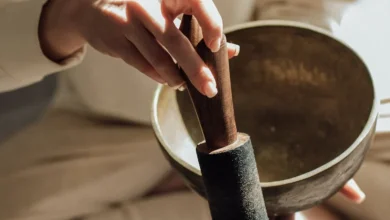Kintsugi: Japanese Art for Personal Growth

Have you ever felt broken or imperfect? Imagine a world where those cracks and flaws are not just accepted but celebrated. Welcome to the world of Japanese Kintsugi, a powerful metaphor for personal growth and resilience.
Kintsugi, which means “golden joinery” in Japanese, is more than just a way to fix broken pottery. It’s a philosophy that can transform how we view ourselves and our struggles. By understanding and applying Kintsugi principles, we can learn to embrace our imperfections and turn our challenges into opportunities for growth.
In this article, we’ll explore how the art of Kintsugi can inspire us to become stronger, more resilient versions of ourselves. Let’s dive into this fascinating world where broken pieces become beautiful works of art, and our personal setbacks pave the way for remarkable transformations.
The Art and Philosophy of Kintsugi
A Brief History
Kintsugi emerged in Japan during the late 15th century. Legend has it that when Japanese shogun Ashikaga Yoshimasa broke his favorite tea bowl, he sent it to China for repairs. Disappointed with the ugly metal staples used to fix it, Japanese craftsmen sought a more beautiful solution. Thus, Kintsugi was born.
The Kintsugi Process
The process of Kintsugi is both an art and a meditation. Here’s how it typically unfolds:
- Gathering the pieces: Carefully collect all the broken fragments.
- Cleaning: Gently clean each piece to remove dirt and debris.
- Reconstruction: Piece the broken parts back together.
- Bonding: Apply a special lacquer to hold the pieces in place.
- Dusting: Sprinkle gold, silver, or platinum powder over the wet lacquer.
- Polishing: Once dry, polish the piece to reveal its new beauty.

Materials Used in Kintsugi
Traditional Kintsugi artists use specific materials, while modern adaptations offer alternatives:
Traditional materials:
- Urushi lacquer (from the sap of the Japanese lacquer tree)
- Gold, silver, or platinum powder
- Rice glue
Modern alternatives:
- Epoxy resin
- Mica powder
- Ceramic adhesives
The Kintsugi technique transforms broken objects into unique works of art. Each golden seam tells a story of resilience and renewal. This process serves as a powerful metaphor for our own personal growth journeys.
By repairing broken pottery with gold, Kintsugi artists create something more beautiful than the original. Similarly, we can view our personal challenges as opportunities to become stronger and more extraordinary versions of ourselves.
Kintsugi as a Metaphor for Personal Growth
Embracing Imperfections
Kintsugi teaches us a powerful lesson: our flaws and struggles can become our greatest strengths. Instead of hiding our imperfections, we learn to highlight them. This shift in perspective can be transformative in our personal growth journey.
Finding Beauty in Brokenness
The Japanese concept of wabi-sabi is closely tied to Kintsugi. Wabi-sabi embraces the beauty of imperfection and impermanence. In Kintsugi, the golden seams don’t just repair the broken piece – they become the most striking feature.
Similarly, in our lives, our past struggles and challenges can become our most defining and beautiful characteristics. They tell the story of our resilience and growth. By adopting this mindset, we can learn to appreciate our journey, including its difficult parts.

The Value of Patience and Mindfulness
The Kintsugi process requires time, attention, and care. It can’t be rushed. This aspect of Kintsugi reminds us of the importance of patience and mindfulness in our personal development.
For example:
- Learning a new skill takes time and practice
- Healing from emotional wounds requires patience and self-compassion
- Personal transformation is often a gradual process, not an overnight change
By embracing the Kintsugi philosophy, we learn to be more patient with ourselves and others. We become more mindful of our growth process, appreciating each small step forward.
Applying Kintsugi Principles to Personal Development
Reframing Setbacks as Opportunities
Kintsugi encourages us to view our setbacks differently. Instead of seeing them as failures, we can reframe them as opportunities for growth and improvement. Here are some examples:
- A job loss can lead to discovering a more fulfilling career path
- The end of a relationship can teach us valuable lessons about ourselves
- A health challenge can inspire us to adopt healthier lifestyle habits
Cultivating Resilience
The Kintsugi mindset is a powerful tool for building emotional resilience. When we see our challenges as part of our unique story rather than as flaws to be hidden, we become more adaptable and stronger in the face of adversity.
This perspective helps us bounce back from setbacks more quickly. We learn to trust in our ability to overcome difficulties and emerge stronger, just like a Kintsugi-repaired piece becomes more valuable after being broken and mended.
Practicing Self-Compassion
Kintsugi reminds us to be kind to ourselves during the healing process. It teaches us that repair takes time and that the result can be beautiful. This principle encourages us to practice self-compassion as we navigate life’s challenges and personal growth.

Practical Ways to Incorporate Kintsugi Philosophy in Daily Life
Now that we understand the principles of Kintsugi and how they relate to personal growth, let’s explore some practical ways to apply this wisdom in our everyday lives.
Mindfulness Exercises
Incorporating mindfulness into your daily routine can help you embrace the Kintsugi philosophy. Here are some simple practices to try:
- Gratitude journaling: Each day, write down three things you’re grateful for, including challenges that have helped you grow.
- Mindful observation: Choose an object and spend five minutes observing it in detail, appreciating its imperfections.
- Body scan meditation: Take a few minutes each day to mentally scan your body, acknowledging and accepting any discomfort or tension without judgment.
Journaling Prompts
Reflective writing can be a powerful tool for personal growth. Here are some Kintsugi-inspired prompts to get you started:
- What “cracks” in your life have ultimately led to positive changes or growth?
- How can you reframe a current challenge as an opportunity for personal development?
- Describe a time when you felt “broken”. How did you heal, and what did you learn from the experience?
- If your life were a Kintsugi bowl, what would the gold seams represent?
Creating a Personal Kintsugi Project
Engaging in a hands-on Kintsugi project can be a meditative and enlightening experience. Start small: find a chipped plate or broken figurine you’ve been meaning to discard. Instead of throwing it away, try repairing it using Kintsugi techniques.
You can use modern materials like epoxy resin and gold mica powder, which are easier to work with than traditional materials. As you repair the object, reflect on how this process mirrors your own journey of growth and healing. Display your finished piece as a reminder of your resilience and the beauty of imperfection.

The Impact of Kintsugi on Mental Well-being
Stress Reduction
Embracing the Kintsugi philosophy can significantly reduce stress in our lives. By accepting imperfections and viewing challenges as opportunities for growth, we can alleviate the pressure we often put on ourselves to be “perfect”. This shift in perspective allows us to approach difficulties with a calmer, more centered mindset.
Improved Self-Esteem
The Kintsugi approach to embracing imperfections can have a profound impact on our self-esteem. When we learn to value our “cracks” and see them as unique parts of our story, we develop a more positive self-image.
Instead of being self-critical about our perceived flaws or past mistakes, we begin to appreciate how these experiences have shaped us. This newfound self-acceptance can boost our confidence and help us approach life with greater authenticity and self-assurance.
Enhanced Emotional Intelligence
Practicing Kintsugi principles in our daily lives can foster greater emotional intelligence. Here’s how:
- Self-awareness: By reflecting on our experiences and how they’ve shaped us, we become more attuned to our emotions and reactions.
- Empathy: Understanding our own “cracks” helps us be more compassionate towards others’ struggles.
- Resilience: Viewing challenges as opportunities for growth enhances our ability to bounce back from setbacks.
For example, when we encounter a colleague struggling with a difficult project, our Kintsugi mindset might help us see their struggle as a growth opportunity rather than a failure. This perspective allows us to offer support and encouragement instead of judgment.
Conclusion
As we wrap up our exploration of Japanese Kintsugi and its application to personal growth, let’s recap the key points we’ve discovered:
- Kintsugi is more than just a repair technique; it’s a philosophy that celebrates imperfections and resilience.
- By embracing our “cracks,” we can transform our challenges into sources of strength and beauty.
- The Kintsugi mindset encourages patience, mindfulness, and self-compassion in our personal development journey.
- Practical applications of Kintsugi philosophy include mindfulness exercises, reflective journaling, and hands-on creative projects.
- Adopting a Kintsugi approach to life can reduce stress, improve self-esteem, and enhance emotional intelligence.
The wisdom of Kintsugi reminds us that our struggles and imperfections are not flaws to be hidden, but unique aspects of our journey that make us who we are. By embracing this mindset, we open ourselves to profound personal growth and a deeper appreciation for life’s complexities.
As you move forward from here, we encourage you to look at your life through the lens of Kintsugi. What are the golden seams in your own story? How can you honor your past experiences, even the difficult ones, as valuable parts of your personal growth?
Remember, like a Kintsugi-repaired piece of pottery, you are not defined by your breaks or imperfections. Instead, you are constantly evolving, growing stronger and more beautiful with each experience. Embrace your journey, golden seams and all.

Your Next Steps
To start incorporating the Kintsugi philosophy into your life:
- Try one of the mindfulness exercises mentioned earlier this week.
- Spend some time journaling about your personal “cracks” and how they’ve contributed to your growth.
- Consider starting a small Kintsugi-inspired craft project as a tangible reminder of this philosophy.
By taking these steps, you’re not just learning about Kintsugi – you’re actively applying its principles to your life, fostering resilience, self-compassion, and personal growth.
Remember, true personal growth techniques often challenge us to view ourselves and our experiences in new ways. The Japanese Kintsugi philosophy offers us a beautiful framework for doing just that. As you continue on your journey of self-discovery and improvement, let the golden seams of Kintsugi inspire you to embrace all aspects of yourself – cracks, repairs, and all.



